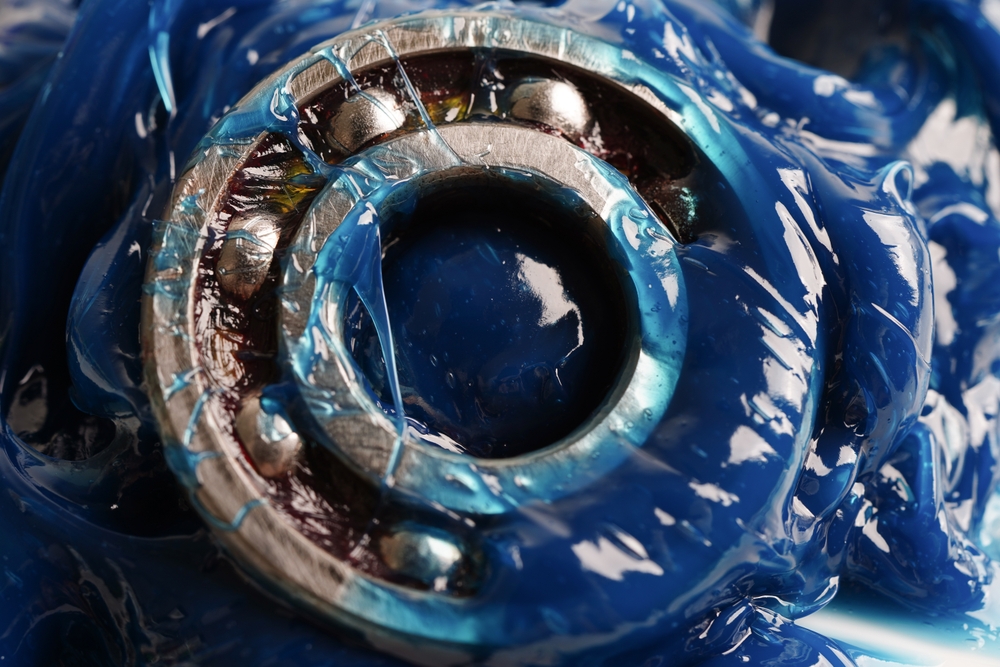Best Practices for Lubricating Bearings in AC and DC Drives

You know the rule: If it moves, it needs to be lubricated. Especially when it comes to AC and DC drives, lubricating bearings isn’t just routine maintenance. It’s one of the best things you can do for long-term efficiency. When approached correctly, it can significantly reduce downtime, extend equipment life, and save on maintenance costs. Here are a few tips from the pros at GES to get it done right.
- Choose the right lubricant. Always refer to the manufacturer’s recommendations for lubricant specifications to ensure you’re using the best product for your motor bearings. And consider the operating temperature range, speed of the bearing, load conditions, and environmental factors like humidity, dust, and chemicals.
- Maintain proper levels. Over-lubrication can be just as harmful as under-lubrication, which makes it important to follow manufacturer recommendations for lubrication best practices. Implement a regular inspection schedule to check lubrication levels, and be aware that high-speed bearings typically require less lubricant than low-speed ones.
- Establish a schedule. Regular lubrication prevents premature wear and extends the life of bearings — as well as the longevity of the drives they’re part of. Create a lubrication schedule based on operating conditions and equipment usage, and be prepared to adjust it based on inspections and equipment performance.
- Use clean tools. Contamination can significantly impact bearing life. To prevent this, use clean grease guns and other lubrication tools. Store lubricants in a clean, dry area to prevent contamination before use, and always wipe fittings clean before applying lubricant.
- Monitor bearing temperature. Excessive heat can indicate lubrication problems. Use infrared thermometers for regular temperature checks and be aware of normal operating temperatures for your AC and DC drive. Any significant temperature increases should be investigated promptly, starting with a closer look at lubrication standards.
- Implement proper techniques. Apply grease slowly to allow even distribution throughout the bearing. When possible, rotate the bearing during lubrication to ensure complete coverage. Avoid over-pressurizing the bearing seals — this can damage them and lead to lubricant loss or contamination.
- Consider automatic systems. For critical or hard-to-reach bearings, automatic lubrication systems can be beneficial. They provide consistent, measured amounts of lubricant, reducing the risk of human error. These systems can be especially useful in hazardous locations where manual lubrication might be difficult or dangerous.
- Train maintenance personnel. Proper training paves the way for proper lubrication. Educate maintenance techs on the importance of good lubrication standards and provide hands-on training for servicing the equipment on your floor. The more they know, the better they’ll do.
- Document and analyze data. Keeping records can help you get a better handle on your lubrication program. Log lubrication activities including service dates, amounts, and types of lubricant used. Then, track bearing performance and failures, and use this data to refine your lubrication practices.

Bearing lubrication can make or break the long-term performance and reliability of industrial AC and DC drives. Following best practices can significantly extend the life of bearings, improve equipment reliability, and even reduce maintenance costs. Keep these tips in mind as you take a more proactive, responsible approach to lubricating bearings in AC and DC drives. And if time is pressing, take a load off — just call GES.
This October, we’re offering a special on AC and DC drive repairs: 10% off any single drive repair or 15% off three or more repairs!
